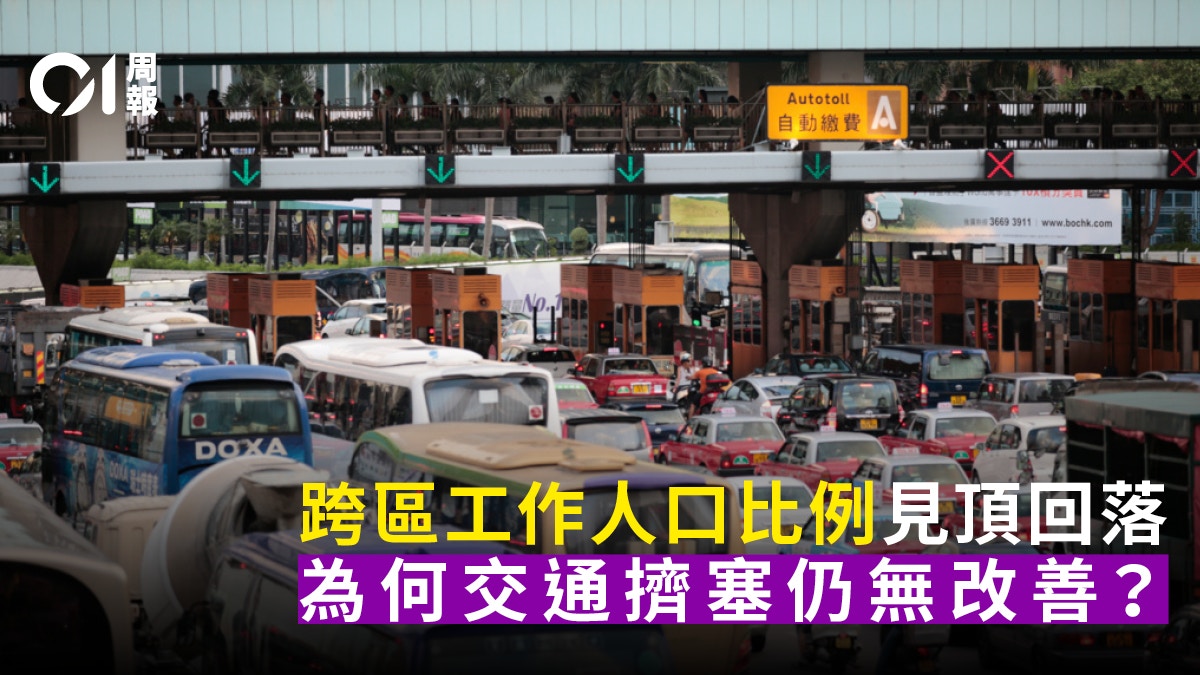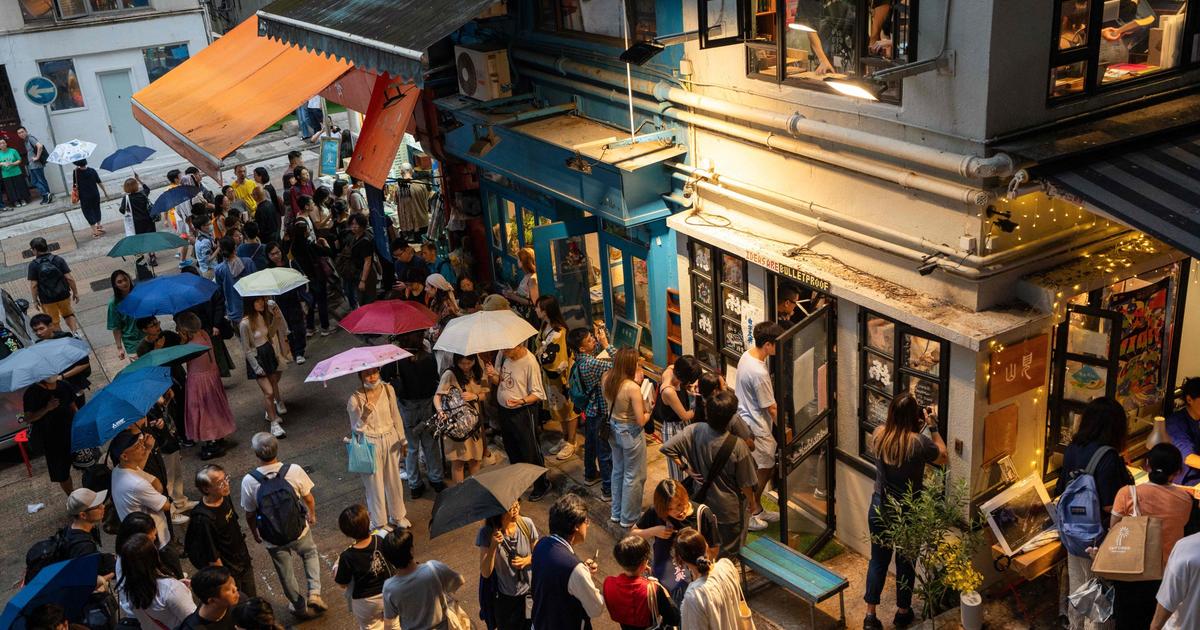The Census and Statistics Department has successively released the results of the 2021 population census this year. The batch released from the end of last month to the middle of this month contains information on district council districts, constituencies and new towns.
This article organizes some data related to work and living areas, and brings some inspiration for future new town planning.
With the northward shift of industry in the 1980s, Hong Kong’s main industries have become service industries. Among them, finance, professional services and tourism require a lot of labor-intensive catering and retail manpower support. Therefore, high and low-skilled jobs also stay in the urban area. .
New Territories residents "going out of Kowloon" and "crossing the opposite sea" for work have become the norm, resulting in long commuting time, road traffic congestion, overcrowded carriages and high transportation costs, and indirectly reducing the time to spend with family members and stay in the community.
Southbound traffic of private vehicles across the sea rises amid epidemic
The above-mentioned imbalance in the distribution of jobs and housing ushered in a turning point after entering the 2010s.
Let’s first look at some large-scale data. In terms of labor force, the New Territories have continued to grow in the ten years from 2011 to 2021, and the population of Hong Kong and Kowloon has dropped from the high level in 2016.
Most of the labor force works in Hong Kong, and the positions are onshore and have a fixed place of work.
Compared with 2011 and 2016, in 2021, the population with a fixed workplace will still be concentrated in Hong Kong Island and Kowloon, but the proportion will drop by about 1.3 percentage points to 65.3%.
Jobs are still concentrated on both sides of the Victoria Harbour. The first three District Council districts have also been Yau Tsim Mong, Central and Western District and Kwun Tong over the past decade, accounting for about 34% of the total.
However, in real population terms, the working population in these three boroughs peaked in 2011 or 2016.
On the other side, the working population of four districts has increased, namely Southern District, Tai Po, Tseung Kwan O and Tin Shui Wai, reflecting the trend of dispersion in the distribution of regional jobs in the past ten years. The village and Tin Shui Wai have new hotel openings.
Shah is the first generation of new towns in the New Territories, and was known as self-sufficiency and balanced development.
(Photo by Huang Yongjun)
In 2021, the working population across the region will reach 1.186 million, accounting for 32.6%, but compared with 2011, the number and proportion are declining, including the population crossing the sea.
However, why do the citizens still feel that the commuters are crowded and the traffic jams across the sea are still serious?
There are several possible reasons. It is more certain that the traffic of private cars/passengers and goods vehicles crossing the sea in the southbound has increased, resulting in increasing congestion. According to the statistics by district, the main sources are Sham Shui Po, Kowloon City, Kwun Tong, Yuen Long, Shatin and Sai Kung districts. .
Among these districts, Sai Kung District has experienced particularly rapid growth, with an increase of more than 20% in the past ten years. The traffic flow of the Cross-Harbour Tunnel in the Eastern District has quickly rebounded after the initial decline in the epidemic. It is believed that this is because private housing estates in Tseung Kwan O have gradually entered the market. and Sai Kung District's population increased.
Another possible reason is that there has been a significant increase in the working population in local non-regular workplaces, which has stimulated demand for transportation.
From 2011 to 2021, the number of people increased from 248,000 to 597,000, and the proportion rose from 7.24% to 16.4%.
The Census and Statistics Department has not prepared the job sector or occupational distribution of this group of people, but the increase in the population of non-fixed workplaces is not just due to the rise of freelance work or platform work.
According to comprehensive household surveys over the years, the population of self-employed persons peaked as early as 2013, at 244,000, and then repeatedly dropped to about 220,000 in 2021. Perhaps in recent years, employees of more types of work have to work in multiple locations. work, resulting in more daily commutes.
In addition, reduced shifts in public transport, or more non-working people going out, may also accumulate commuters in the market.
Although the current minibuses have gradually increased their frequency and opened additional routes, they still cannot meet the service demand brought by the two housing projects.
(Photo by Zeng Fengting)
Job-housing balance emphasizes quantity ratio and affordability
Although the overall population and proportion of inter-district work has declined in the past ten years, and the number of jobs in some parts of the New Territories has increased compared to the past, most citizens have not felt the obvious benefits of living by job dispersion, and traffic congestion still plagues society.
The transportation service of Queen's Hill Village in Fanling is far behind the demand. Residents have long queued to wait for the bus. The bus company promised to increase the frequency and dispatch the bus.
This incident once again reflects the old problem of local job imbalance.
The previous government promoted the northern metropolitan area and stressed that one of the goals was to promote job-housing balance, with transport infrastructure being dealt with first in the planning process.
The government's determination to solve one of the shackles of citizens' lives deserves recognition, and in the specific planning, officials must be careful to calculate the proportion and distribution of work locations and housing in order to achieve the goal of commuting to get off work in 45 minutes, for example, and more importantly, to ensure housing affordability. , the general public will not live in a place far from work because the property price and rent are too expensive.
The Government should cite the example of the Science Park as a warning. Although there are many private residences near the Science Park, many employers and employees have complained that accommodation arrangements are difficult in the past.
Only last year, the Science and Technology Park Company built an innovation room of about 500 units, but its effectiveness in relieving overseas innovation and technology talents is only a drop in the bucket.
New towns continue to be the locomotive of Hong Kong’s social and economic development. The government must absorb the past planning deficiencies and truly build livable cities in the future, so that local and overseas working people can live and work in peace and contentment.
For details, please read the 327th issue of "Hong Kong 01" e-weekly report (July 25, 2022) " The ratio of
cross-regional working population has peaked and dropped, why traffic congestion still does not improve
".
Click here
to try out the weekly e-newsletter for more in-depth reports.






/cloudfront-eu-central-1.images.arcpublishing.com/prisa/3I74UEXLYRBBRPGPSGWNN6WXH4.jpg)






